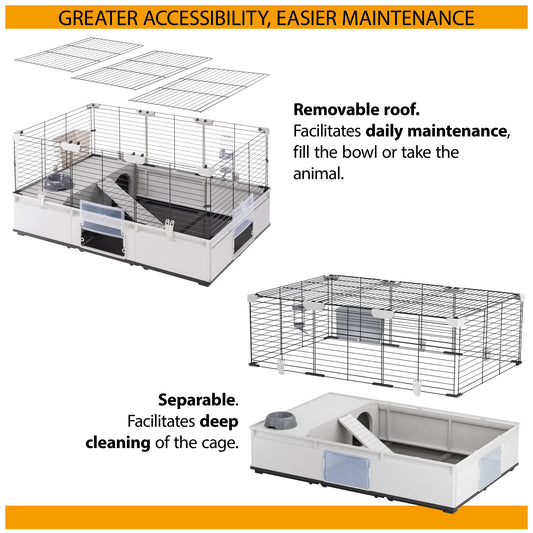As pack animals, dogs are generally very welcoming when it comes to adding a new pup to their household – as long as introductions are done correctly. With a bit of prior planning, you should be able to avoid areas of conflict and help your new puppy and older dog to form a good relationship.
Before Your Puppy Arrives
In addition to puppy-proofing your home much in the same way as you would child-proof it (think electric cables and low breakables) you should also plan where your puppy’s resources will go. For example, food can be a cause of conflict between dogs so you will need to feed your two pets separately. This also stops your older dog getting hold of the puppy’s delicious food, which is likely to be more calorific than its own.
Plan a safe space for your dog to retreat to if the attention of a puppy gets a bit much. You can create a cosy den with a covered dog crate or put their bed in a secluded nook in your home. Never disturb your dog when they are in their safe space – this includes keeping the puppy out of their way.
Dogs learn a lot about each other from their smell so one way to get your puppy and dog used to each other before they meet face to face is with scent swapping. This involves rubbing one old tea towel or cloth over your puppy and another over your dog and giving them each other’s scents to sniff. If your puppy and dog have become familiar with each other’s scents before meeting, they are more likely to be relaxed in each other’s company.
First Meetings
Ideally your dog should meet your new puppy outside of the home at least once before they move in. These meetings are best done on neutral territory if possible, such as on a short walk close to home, but if your new puppy has not yet completed their initial course of vaccinations you should choose an area of low canine traffic to limit the risk of infection.
With your puppy and dog both on leads you can manage interactions between them as they sniff and investigate each other. If either dog starts to get over excited or boisterous, give them a break from each other to calm down.
Keep meetings short – around ten minutes initially – before taking your older dog away for a break. Make sure you reward them with a treat to help create a happy and positive association with the puppy.
When you are ready for your puppy to enter the home, you will need to continue to supervise interactions between them and your older dog closely. A stairgate is a useful tool here as you can create a barrier between rooms that allows the dogs to see and sniff each other but prevents any physical contact.
Ensure that any toys or chews belonging to your older dog are kept out of reach of the puppy so they cannot get to them. If your dog sees the pup with its precious things, it is likely to cause conflict.
When you can’t supervise your puppy and dog you should keep them separated. It is a good idea to crate train your puppy so that you can leave them in safety when you are unable to keep an eye on them.
The Future
Your older dog may need a little time to adjust to having another dog in the home but as long as you keep their routine as normal as possible, and don’t ignore them in favour of the new puppy, they should soon be the best of friends.
If you enjoyed this article, have a look at:
Introducing Your Dog to Your New Baby
Keep Your Dog Calm and Carry On!









